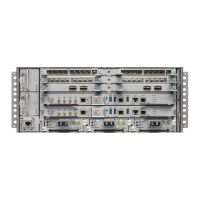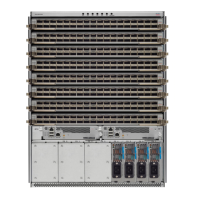PurposeCommand or Action
(Optional) Displays OSPF neighbor information on an
individual interface basis.
show { ospf | ospfv3 }[ process-name ] [ area-id ]
neighbor [ t ype interface- path-id ] [ neighbor-id ] [
detail ]
Step 6
Example:
RP/0/RP0/CPU0:router# show ospf 100 neighbor
(Optional) Resets an OSPF router process without stopping
and restarting it.
clear { ospf | ospfv3 }[ process-name ] process
Example:
Step 7
RP/0/
/CPU0:router# clear ospf 100 process
Clears OSPF route redistribution.
clear{ospf|ospfv3[ process-name ] redistribution
Example:
Step 8
RP/0/RP0/CPU0:router#clear ospf 100 redistribution
Clears OSPF route table.
clear{ospf|ospfv3[ process-name ] routes
Example:
Step 9
RP/0/RP0/CPU0:router#clear ospf 100 routes
(Optional) Clears the OSPF statistics of neighbor state
transitions.
clear { ospf | ospfv3 }[ process-name ] statistics [
neighbor [ type interface-path-id ] [ ip-address ]]
Example:
Step 10
RP/0/RP0/CPU0:router# clear ospf 100 statistics
Configuring OSPF Queue Tuning Parameters
The following procedures explain how to limit the number of continuous incoming events processed, how to
set the maximum number of rate-limited link-state advertisements (LSAs) processed per run, how to limit the
number of summary or external Type 3 to Type 7 link-state advertisements (LSAs) processed per shortest
path first (SPF) run, and how to set the high watermark for incoming priority events.
SUMMARY STEPS
1. configure
2. router ospf process-name
3. queue dispatch incoming count
4. queue dispatch rate-limited-lsa count
5. queue dispatch spf-lsa-limit count
6. queue limit { high | medium | low } count
Routing Configuration Guide for Cisco NCS 6000 Series Routers, IOS XR Release 6.4.x
321
Implementing OSPF
Configuring OSPF Queue Tuning Parameters

